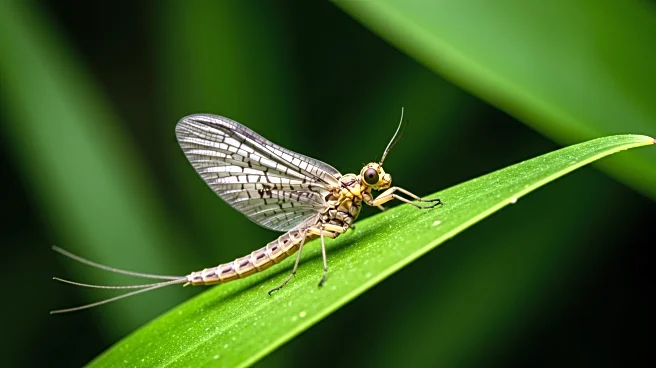What's Happening?
Research conducted on the mayfly species Electrogena lateralis has revealed insights into the spectral sensitivity and temporal resolution of their compound eyes. The study involved collecting larvae from Northern Hungary and analyzing their photoreceptor responses using electroretinogram recordings. The findings indicate that the compound eyes of mayflies are adapted to detect specific wavelengths of light, with differences observed between sexes and life stages. The research contributes to understanding the visual capabilities of mayflies and their ecological adaptations.
Why It's Important?
The study of mayfly compound eyes provides valuable information on the evolutionary adaptations of insects to their environments. Understanding the spectral sensitivity of mayflies can inform ecological research and conservation efforts, particularly in freshwater habitats where these insects play a crucial role. The findings may also have implications for biomimicry in technology, where insights from insect vision can inspire advancements in optical systems and sensors.











